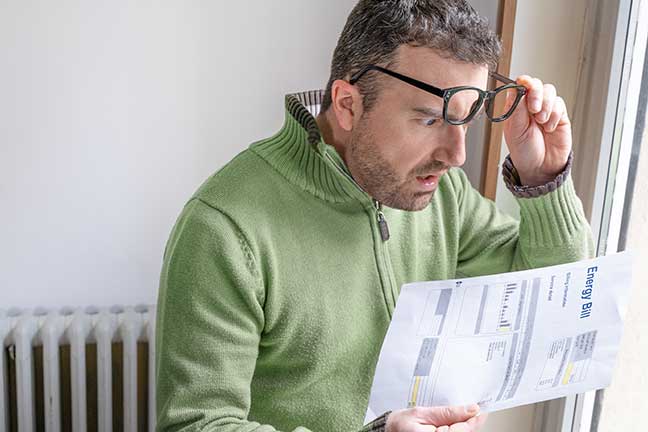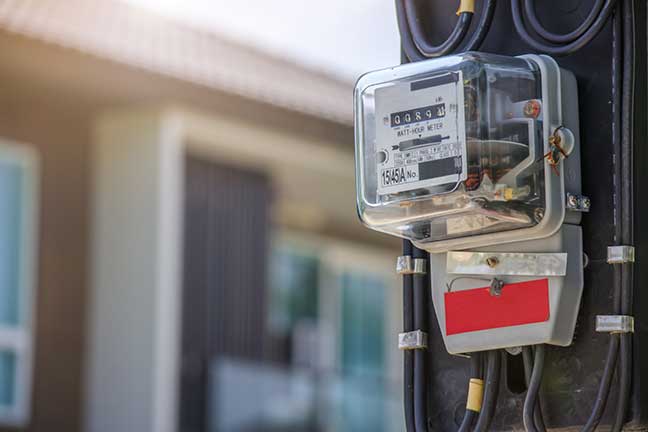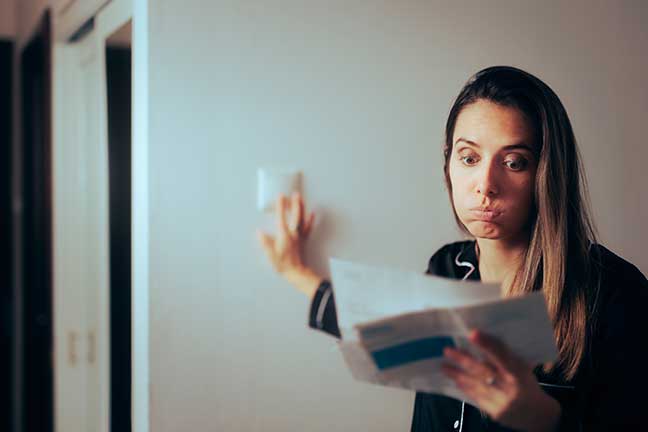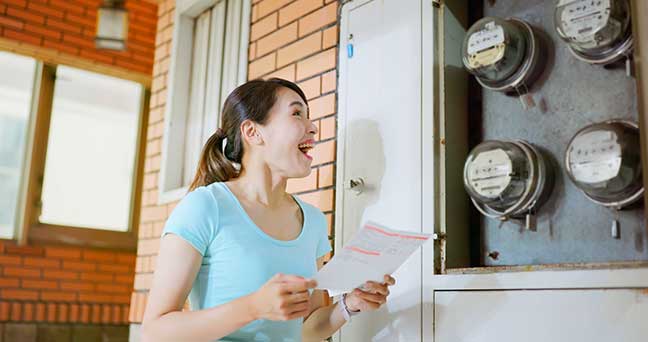Hey there! Living in an apartment and worried about your rising electric bills? You’re not alone. Let’s explore some smart, easy ways to bring those bills down without sacrificing your comfort.
Analyzing Your Usage
How to Analyze: Grab your electric bill and take a closer look. You’ll usually find a chart showing your monthly usage. Notice the peaks and troughs? They tell you when you’re using the most or less electricity. Perhaps it’s during the evenings when everyone’s home or on weekends. Online energy tracking tools provided by many utility companies can also give you a detailed breakdown.
Potential Savings: By understanding your energy usage and patterns, you can identify unnecessary energy consumption. For example, if you notice your energy use spikes in the evenings, simple changes like ensuring lights and appliances are off when not in use can lead to savings.
The U.S. Department of Energy estimates that turning off appliances and lights when not in use can save $35 to $50 annually.
Understanding Peak Hours
How Peak Hours Work: Electricity rates can vary based on the time of day, known as Time-of-Use (TOU) pricing. During peak hours, typically in the afternoon and early evening, electricity demand is high, making it more expensive.
How to Save: Shift your high-energy activities to off-peak hours. If your utility uses TOU pricing, doing laundry or running the dishwasher late at night or early in the morning can reduce your energy bill.
Example Savings: The difference in cost can be substantial. According to some estimates, using energy during off-peak times can be ways to save up to 5-10% on your electricity bill. For the average apartment dweller, this could mean annual savings of around $50 to $100.
Energy-Efficient Appliances and Usage
Understanding ENERGY STAR Ratings: ENERGY STAR is a government-backed symbol for energy efficiency. Products with this label meet strict energy efficiency criteria set by the EPA. These appliances use less energy compared to non-rated ones.
For instance, an ENERGY STAR refrigerator uses about 9% less energy, on average household while an ENERGY STAR washing machine uses about 25% less energy compared to standard models.
Cost-Savings: Though ENERGY STAR appliances might be more expensive upfront, they offer significant savings on utility costs over time. For example, an ENERGY STAR-certified clothes washer can save up to $50 per year on utility bills. Over the lifespan of the appliance, this adds up to considerable savings.
Smart Appliance Usage: Maximizing efficiency doesn’t stop at purchase. Using these appliances wisely is key. Always wait for a full load before running your dishwasher or washing machine. This simple habit can significantly reduce water and energy consumption. Running a dishwasher and washing dishes only when it’s full can save up to 100 pounds of carbon dioxide and $40 per year.
By choosing ENERGY STAR appliances and using them efficiently, you’re not just saving money, but also contributing to environmental sustainability. The combination of smart purchasing and smart usage is a powerful tool for reducing your apartment’s electric bill.
Use Energy Efficient Light Bulbs and Electronics
LED Bulbs: Switch to LED bulbs. They last longer and use less energy than traditional bulbs.
Manage Electronics: Unplug chargers when not in use and consider smart power strips to reduce energy drain from electronics and save money on your electric bill.
Heating and Cooling Smartly
Thermostat Management: Adjusting your thermostat by a few degrees can make a big difference. Set it lower in winter and higher in summer when you’re not home.
Sealing and Insulation: Check for drafts and ensure your apartment is well-insulated to keep cool in summer and warm in winter.
Water Heating and Usage
Water Heater Temperature: Lowering the temperature on your water heater can reduce energy costs. Just two degrees can make a big difference.
Efficient Water Use: Simple changes like taking shorter showers and fixing leaks can reduce your hot water usage.
Lifestyle and Habit Changes
Energy-Saving Habits: Small daily habits, like turning off lights when leaving a room, can add up to significant savings.
Community Programs: Look into energy-saving programs and rebates from your local utility companies. They often have great deals that can help you save energy and lower your costs.
LIHEAP: Government Assistance Program for Reducing Heating and Cooling Costs
What is LIHEAP?
LIHEAP is a federally funded program that assists homeowners, renters, and those in subsidized housing with their utility bills, particularly for heating and cooling expenses. The program is designed to help those who have a financial need and meet specific income limits.
How to Qualify for LIHEAP
Qualifying for LIHEAP involves meeting income eligibility limits, which vary by state. These limits are set within certain federal guidelines, and you must demonstrate financial need. The program is open to both homeowners and renters, ensuring broad accessibility for those who need assistance with their energy bills.
You may also be able to qualify if already receiving other government assistance programs like SNAP.
Types of Assistance Provided
LIHEAP offers several types of assistance, including:
- Help with home heating bills: This can be a relief during the winter months, ensuring that homes stay warm and safe.
- Assistance to prevent energy shutoffs: For those struggling to pay their utility bills, LIHEAP can prevent the loss of heating or cooling services.
- Aid in reconnecting services: If your utilities have been shut off due to non-payment, LIHEAP can help restore them.
- Support for making homes more energy-efficient: This includes repairing or replacing inefficient heating equipment, which can lead to long-term savings.
Potential Savings and Benefits
While the exact amount of assistance varies, LIHEAP can significantly reduce the burden of high energy costs. The program not only provides immediate financial relief but also contributes to long-term energy efficiency in homes.
Applying for LIHEAP
Applying for LIHEAP is straightforward. Contact your local state, territory, or tribal LIHEAP office to find out the specific details and application procedures for your area. You can also visit the National Energy Assistance Referral (NEAR) project or the LIHEAP Clearinghouse website for more information and assistance in applying.
Additional Benefits: Lifeline and ACP Programs with EASY Wireless
Did you know that the same income guidelines that qualify you for LIHEAP might also make you eligible for the Lifeline and Affordable Connectivity Program (ACP) with EASY Wireless? These programs are designed to support qualifying households by providing essential communication services.
Lifeline and ACP Benefits with EASY Wireless
If you meet the income criteria for LIHEAP, there’s a good chance you can also take advantage of EASY Wireless’s offers. Qualifying for these programs can unlock a range of benefits, including:
- SIM Card Kit: EASY Wireless provides a free SIM Card Kit to eligible customers.
- Free Monthly Unlimited Data, Talk, and Text: Imagine having unlimited access to data, talk, and text each month without worrying about the costs.
- Ease of Application: Applying for these benefits is quick and straightforward. You can complete the application online in just a few minutes, making it convenient and accessible.
Apply Online Today
Enter your email and zip code in the box below and click “Enroll Now” to eliminate your monthly cell phone and data bills.
{enroll now box}
Use All Options to Save Money Every Month
Lowering your electric bill in an apartment is all about making small, consistent changes. From tweaking your daily habits to investing in energy-efficient appliances, every little bit helps. Not only will you see a reduction in your bills, but you’ll also be contributing to a more sustainable world. Then look for programs and rebates that can lower your monthly expenses even further and put money back in your pockets.





